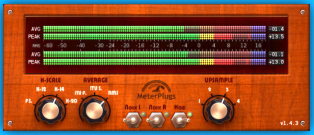Hi guys,
I'm new here.
I've been producing prog psy / psytrance since a while, but a question is triggerring me. I'll try to be as clear as possible.
If i mix my track with : My kick hitting at -10db and my bassline at -13db. So when both are playing, my master track is peaking at -10db.
But when I add elements in the track, the peaks on the master track may up go around -9db or -8db.
So my question is : do I have to always mix my tracks aiming a maximum of -10db peak on my master (because that's the kick level which is the main element) or is it "ok" to have some peaks during the track above my kick level before sending it to master ? (Which would may be fixable on the mastering ?)
Thanks a lot for your time and your help,
Have a wonderful day,
Hugo
I'm new here.
I've been producing prog psy / psytrance since a while, but a question is triggerring me. I'll try to be as clear as possible.
If i mix my track with : My kick hitting at -10db and my bassline at -13db. So when both are playing, my master track is peaking at -10db.
But when I add elements in the track, the peaks on the master track may up go around -9db or -8db.
So my question is : do I have to always mix my tracks aiming a maximum of -10db peak on my master (because that's the kick level which is the main element) or is it "ok" to have some peaks during the track above my kick level before sending it to master ? (Which would may be fixable on the mastering ?)
Thanks a lot for your time and your help,
Have a wonderful day,
Hugo


